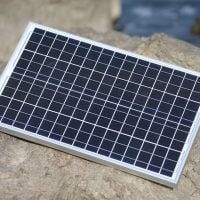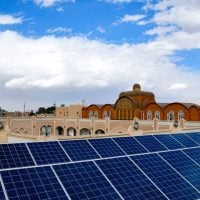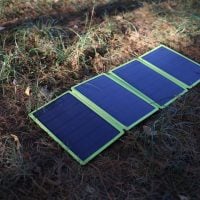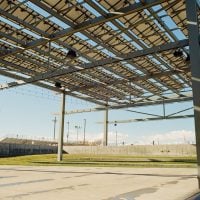Deadline: 9-Mar-23
The U.S. Environmental Protection Agency’s (EPA) Office of Research and Development (ORD) seeks to support a Research Training Program for college and university students.
The objective of this Request for Applications (RFA) is to support the training of undergraduate and graduate students on site at EPA’s research facility located in Cincinnati, Ohio. ORD conducts timely, mission-relevant, solution-oriented research based on the principles of integrity, sustainability, and responsiveness to the needs of the Nation.
The Research Training Program will substantially benefit future environmental scientists, researchers, and technicians by allowing trainees to collaborate with senior EPA-ORD scientists while conducting projects in a fully operational federal research laboratory. The overall goal is to train the next generation of science, technology, engineering and mathematics (STEM) scientists to further the Agency’s mission to reduce greenhouse gas emissions, improve air quality, manage chemical risks, and protect America's water. All training projects will be conducted at EPA’s facilities in Cincinnati, Ohio. Some examples of the fields of study for desirable student trainees include (but are not limited to) those majoring in chemistry, engineering, biology, computer science, physical science, life science, ecology, and urban planning.
The Research Training Program for College and University Students RFA supports STEM education through hands-on experience and training that brings classroom learning to life. To the extent practicable, applicants should describe the STEM education ecosystem in their project. A STEM education ecosystem consists of partners united by a collective vision of supporting participation in STEM through the creation of accessible, inclusive STEM learning opportunities spanning all education stages and career pathways. A STEM education ecosystem continuously evaluates its activities and adapts as needed, plans for the long-term, and communicates its work to build broad support and advance best-practices.
Goals and Objectives
-
Goal 1: Tackle the Climate Crisis
- Objective 1.1: Reduce Emissions that Cause Climate Change
- Objective 1.2: Accelerate Resilience and Adaptation to Climate Change Impacts
-
Goal 4: Ensure Clean and Healthy Air for All Communities
- Objective 4.1: Improve Air Quality and Reduce Localized Pollution and Health Impacts
- Objective 4.2: Reduce Exposure to Radiation and Improve Indoor Air
-
Goal 5: Ensure Clean and Safe Water for All Communities
- Objective 5.1: Ensure Safe Drinking Water and Reliable Water Infrastructure
- Objective 5.2: Protect and Restore Waterbodies and Watersheds
-
Goal 7: Ensure Safety of Chemicals for People and the Environment
- Objective 7.1: Ensure Chemical and Pesticide Safety
- Objective 7.2: Promote Pollution Prevention
Areas of Interest
- The educational and technical merit of the training program should be described and should support EPA-ORD’s goal and objective of training the next generation of STEM scientists. The program should provide for a partnership between a successful institution and EPA-ORD-Cincinnati to train a new generation of students who will obtain degrees in the STEM sciences and pursue careers in environmentally related fields. Describe the STEM education ecosystem, its members, and how the STEM education ecosystem will effectively support the project.
- The applicant is expected to describe the process and procedures for matching the trainees identified for the training program with the available training opportunities related to EPA-ORD-Cincinnati’s research topics/themes. EPA-ORD-Cincinnati will designate mentors through the EPA Project Officer. The EPA-ORD-Cincinnati Mentors will provide research topics/themes for potential projects to be advertised to ensure a fit between the trainees’ interests and qualifications and the training and research opportunities available at the EPA-ORD-Cincinnati laboratory. Research topics/themes include, but are not limited to, pollution prevention and green chemistry; biological, physical, and chemical remediation; sustainability and resilience; ecosystems research; climate change, cumulative impacts; and environmental research of watersheds, drinking water and wastewater.
- The applicant should propose how it will provide and manage financial support to trainees. Training will be conducted on-site at the EPA-ORD facilities in the Cincinnati, Ohio area, on a regular basis during the academic year, with the option for continued training/mentorship during the summer session. The applicant should explain its approach for managing any logistics to meet this objective. While actual hours spent at EPA’s facilities is likely to vary, it is expected that a typical trainee will spend 10+ hours per week during the academic year at the EPA facilities and 20+ (max of 40) hours per week at the EPA facilities if participating in the cooperative agreement between semesters or summer session. Actual number of hours worked per week will be determined based on each trainee’s availability due to their class schedule and hours needed to complete their training project(s). The applicant should explain how it will provide scientific oversight for the selected trainees’ development of personal training plans which outline their anticipated learning objectives and the anticipated benefits to their career. Additionally, the applicant should propose how it will oversee the development of the trainees’ projects.
- The applicant should propose how it will provide guidance and direction to trainees to ensure they are following the health and safety and quality assurance requirements as described by EPA-ORD Mentors while at the laboratory and accomplishing the required coursework for their chosen degree without undue interference from their research responsibilities.
- The program should be designed to recruit undergraduate and graduate students of high potential.
- The applicant should describe how the program will advertise, in as wide a manner as practicable, the traineeships on a competitive basis, and receive, manage, and objectively review applications from students for traineeships. The applicant should describe the criteria to be used in the evaluation of potential trainees. Examples of evaluative criteria include: qualifications, career interests, experience, and academic record.
- The applicant should identify an individual who will be designated to serve as the Principal Investigator/Project Manager. Thisindividual should have a scientific background capable of managing a research training program along with administrative experience.
Funding Information
- Estimated Total Program Funding: $2,500,000
- Award Ceiling: $2,500,000
- Expected Number of Awards: 1
Eligibility Criteria
This solicitation is available to U.S. States, territories and possessions, Federally Recognized Indian Tribal Governments of the U.S., and the District of Columbia; public and private universities and colleges, public and private nonprofit institutions, hospitals, and laboratories located in the U.S. and its territories or possessions; State and local government departments; and foreign entities. Profit-making firms and individuals are not eligible to receive assistance agreements from the EPA under this program.
For more information, visit Grants.gov.









































